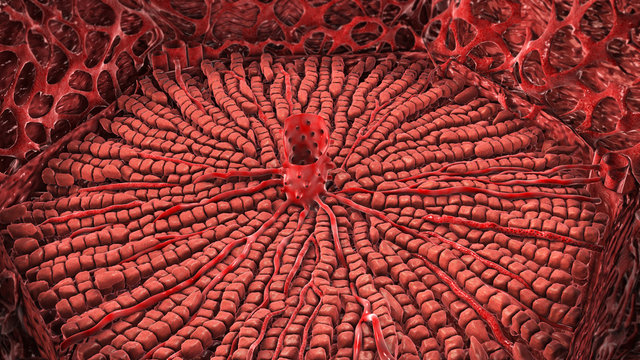
Aspartate aminotransferase (AST) is an enzyme found mostly in the liver but also in red blood cells, heart and other muscles. When liver, red blood cells, heart or muscle cells are injured they release AST into the blood.
AST can be measured by itself but more often it is measured as part of a group of tests known as Liver Function Tests (LFTs). These are all performed on the same blood sample and they give information about how your liver is working.
What is being tested?
Aspartate aminostransferase (AST) is an enzyme found mostly in the liver, red blood cells, heart and other muscles. When liver, red blood cells, heart or muscle cells are injured, they release AST into the blood.
How is it used?
Testing for AST is usually done to detect liver damage.
AST levels can be examined alongside other levels of liver enzymes, such as alkaline phosphatase (ALP) and alanine transaminase (ALT), to determine which form of liver disease is present.
When is it requested?
An AST test is requested with several other tests to help evaluate a patient who has symptoms of a liver disorder. Some of these symptoms include jaundice (yellowing of the eyes and skin), dark urine, nausea, vomiting, abdominal swelling, unusual weight gain and abdominal pain. AST can also be ordered, either by itself or with other tests, for:
Persons who have mild symptoms, such as tiredness, may be tested for AST to make sure they do not have long-term (chronic) liver disease. AST is sometimes measured to monitor treatment of persons with liver disease and is usually ordered along with other tests.
What does the result mean?
Very high levels of AST (more than 10 times the highest normal level) are usually due to a rapidly developing liver disease called acute hepatitis, which is often due to a virus infection. In acute hepatitis, AST levels usually stay elevated for about 1–2 months, but can take as long as 3–6 months to return to normal. In the slowly developing variety of liver disease, chronic hepatitis, AST levels are usually not as high, often less than 4 times the highest normal level. In chronic hepatitis, AST often varies between normal and slightly increased, so doctors might request the test regularly to determine the pattern of change.
In some diseases of the liver, especially when the bile ducts are totally or partially blocked or with cirrhosis, AST may be close to normal. When liver damage is due to alcohol, AST often increases much more than ALT (this is a pattern seen with few other liver diseases). AST can be increased from break-up of red blood cells (haemolysis), and is increased after heart attacks and with muscle injury.
Is there anything else I should know?
An injection of medicine into muscle tissue, or even strenuous exercise, may increase AST levels. In rare instances, some drugs can damage the liver or muscle, increasing AST levels. This is true of both prescription drugs and some 'natural' health products. If your doctor finds that you have high levels of AST, tell him or her about all the drugs and health products you are taking.
Common questions
Commonly used liver tests include other enzymes found in liver cells, such as alanine transferase (ALT) and alkaline phosphatase (ALP), gamma-glutamyl transferase (GGT), bilirubin (a yellow pigment removed from the body by the liver) and albumin (a protein made by the liver).
While many things could harm the liver, the major causes of liver disease are infection by viruses that target the liver and by drinking too much alcohol. In rare cases, some medicines can damage the liver; your doctor may suggest testing your liver from time to time if you are taking one of these. Some diseases that are inherited from your parents can occasionally damage the liver.
In many cases, liver disease is 'silent'. When the liver is damaged rapidly as with acute hepatitis, the skin and the whites of the eyes often turn yellow, and the urine becomes brown. In its late stages, liver disease may produce swelling of the abdomen, vomiting of blood, confusion, and easy bruising.
More information
Pathology Tests Explained (PTEx) is a not-for profit group managed by a consortium of Australasian medical and scientific organisations.
With up-to-date, evidence-based information about pathology tests it is a leading trusted source for consumers.
Information is prepared and reviewed by practising pathologists and scientists and is entirely free of any commercial influence.